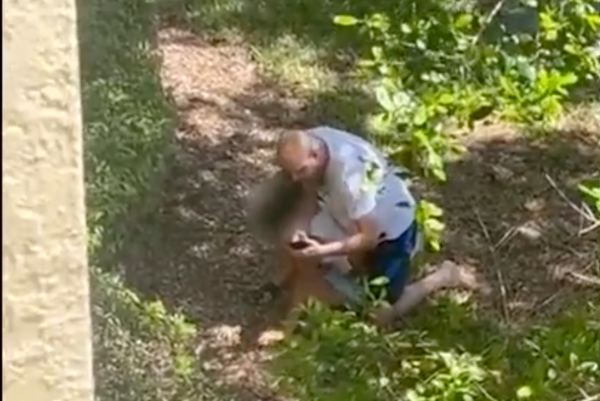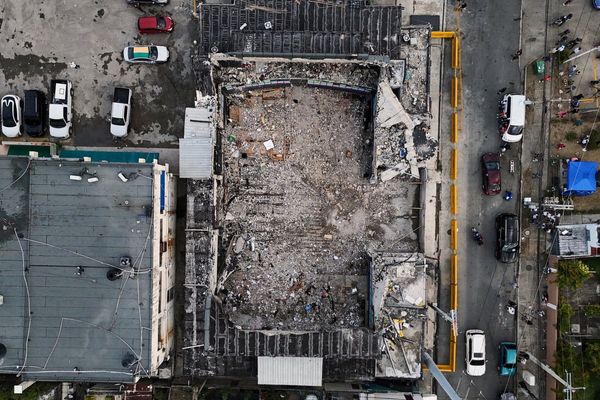
Awe-inspiring storms roll in almost every night during the Amazon rainy season, replenishing the Xingu River and illuminating the night sky with jags of lightning.
This is a period when the forest swells with life. Lustrous pale green shoots burst from every plant, bustling the canopy upwards and outwards. At night, the volume rises a few decibels as a new generation of insects and frogs join the chorus of the dark hours. Even the howler monkeys’ otherworldly audio undulations last longer and reverberate louder.
This January, there is also reason to believe humans might participate in this annual revitalisation of life, rather than plotting to dig up the forest or burn it down as was the case 12 months ago. In fact, whisper it quietly, but some of those involved in forest conservation are daring to express a feeling that was until recently feared extinct: hope.
Optimism may seem misplaced, just weeks after an insurrectionist mob rampaged through the centres of power in Brasília demanding that the army stage a coup to oust the new president, Luiz Inácio Lula da Silva.
The immediate response was shock, outrage and then relief that the attempted putsch by ultra-right Bolsonaristas in the capital, nearly 1,250 miles (2,000km) from my home here in Altamira, failed. And then, a feeling of renewal – a core principle of nature and democracy.

The positive changes have come thick and fast. A new cabinet was sworn in that – in terms of diversity of race, age, gender and colour – resembled a vivid forest instead of the grey suburb represented by the Bolsonaro-era lineup of old white men in suits and military uniforms. The country’s first Indigenous minister in 500 years, Sônia Guajajara, said she wanted to “Indigenise politics and reforest minds”. She took office wearing a headdress, joyfully rattling a maraca and promising to look beyond narrow business interests and human electoral cycles. “We are not the only ones who need to live here. We just cohabit Mother Earth along with millions of other species,” she said.
For the first time, the head of the Funai Indigenous affairs agency is a woman and Indigenous. The respected lawyer Joênia Wapichana replaces a white man with a military background who oversaw the running down of protections and the invasions of Indigenous territories by illegal miners, loggers and fishers.

In congress, the newly elected Indigenous deputy Célia Xakriabá spoke of a turning point: “Reforestation is when we reawaken hope in people who were asleep. Brazil wasn’t dead, Brazil was asleep.” She expressed determination to change the culture of the legislature: “Congress will no longer be grey. It will be the same colour as us, the colour of genipap and annatto.”
This honeymoon mood will, no doubt, run up against political reality. But the euphoria is not blind. Indigenous people in Brazil are more aware than anyone that territory and rights assumed one day can be stolen away the next. It is why Indigenous thinkers such as Ailton Krenak say first peoples are particularly well equipped to deal with the climate crisis because they have been living with apocalypse for centuries.
But this time, Indigenous people are in a position of power. They have a public platform and Lula has promised to give them more territory, not just for reasons of historical justice but because he recognises they are the most effective stewards of nature.
Lula and his environment minister, Marina Silva, have set a goal of zero deforestation and stated a willingness to use the power of the state to prevent further invasions of protected lands and biomes. Farmers have been told they must revitalise degraded land if they want to plant more crops. This is an astonishing break with the past. For hundreds of years, Brazil’s entire raison d’être in the global capitalist economy has been the exploitation of natural resources. It is hard to think of any government in any country with a more ambitious nature agenda.

The prospect is alarming for Amazonian frontier towns such as Altamira, where people voted overwhelmingly for Bolsonaro and some claimed – with no evidence – that Lula had stolen the election, demonstrating for months afterwards outside the army barracks. The protest tents are gone now, cleared by police after the insurrection. But fear, resentment and the threat of violent resistance will remain unless Lula can demonstrate there is a better alternative. This is where international money and support are crucial. Brazil must be recognised as a biodiversity superpower, home to more terrestrial species than any other country, and rewarded for the role it plays in maintaining ecosystems and keeping the climate stable.
There are glimmers of hope. At the recent United Nations biodiversity conference in Montreal, rich nations promised $30bn (£24bn) a year by 2030 to help developing countries achieve their share of a new global commitment to protect 30% of nature. The scale of ambition and the sums of money are far more than anything that came before.

I was one of the few journalists at the previous goal-setting biodiversity conference in Nagoya, Japan, in 2010. Back then, the science denial movement was at its zenith, international cooperation looked fragile, and outside of a small group of experts there was little sense of crisis or urgency. Expectations were so low that when an agreement was finally cobbled together, the relief in the conference centre was palpable. The Brazilian delegation, which had helped bridge the gap between rich and poor nations, cheered and sang. But it proved a hollow deal. Indigenous communities had little say in the outcome. There was not enough funding, transparency, or penalties for shirkers. As a result, not one of the Aichi biodiversity targets agreed in Nagoya was ever achieved.
Will the Montreal deal be any better? Compared with the past it is an improvement. Compared with what is needed, it is nowhere near enough. Eventually, the goal must be for Brazil and other ecosystem-rich countries to receive more revenue from maintaining their biomes than from clearing them. Farmers need to become stewards. Forests must be worth more alive than dead. This requires a transition to a “nature positive” economy – a challenge akin to the more familiar “net zero” shift from fossil fuels to clean energy, though it lags much further behind. For that to happen, there needs to be more understanding of the role nature, however distant, plays in all our lives.
Looking out across the Xingu, the interplay between the forest and the sky is evident. The trees create their own weather. I am not sure if Amazonian storms are more intense but they are definitely more frequent than anywhere I have lived before. About 70% of the world’s 1.4bn lightning flashes a year occur over land in the tropics. Many are probably caused by the forest, according to Nasa scientists, who believe the growth of plants flicks the regional monsoon switch by creating storms at the start of the rainy season and changing the direction of winds. Other scientists see the Amazon as a giant pump. The Brazilian climatologist Antonio Nobre explains how the evapotranspiration of billions of trees creates “flying rivers” that channel enormous volumes of water across much of South America and influence the trade winds over the Caribbean and Atlantic. For him, the Amazon acts as one of the world’s vital organs. Not the lungs, as is often mistakenly claimed; much more like the heart.

That is surely worth maintaining. But this heart is now beating less strongly. The Amazon has lost 17% of its area and is generating less rain. If deforestation reaches 20%, there is a risk of system failure: the rainforest will dry up and become scrubland. One of Lula’s first acts as president was to propose Brazil host the United Nations climate summit Cop30 in the Amazonian city of Belém at the end of 2025. That will be three years into his four-year term – a good moment to judge hopes for a turning point in Brazil and the world. We cannot yet say whether it will inspire renewal or more conflict. At the very least, the storms will be spectacular.







